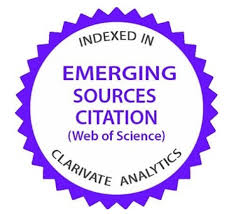Oñati Socio-legal Series (ISSN 2079-5971) is published by the Oñati International Institute for the Sociology of Law Foundation (IISL-IISJ). The journal is indexed on the following platforms:

Agenzia nazionale di valutazione del sistema universitario e della ricerca: Upper Class ("A") journal
Qualis-CAPES: A2 journal
Oñati Socio-Legal Series is preserved in LOCKSS. Read our LOCKSS Manifesto here.
Oñati Socio-Legal Series and all its contents are published under the Creative Commons Attribution‑ Noncommercial ‑ No Derivative Works 4.0 license.
You are free to share – to copy, distribute and display the work – under the following conditions:
- Attribution: You must attribute the work as [Name(s) of author(s)], [Title of article], Oñati Socio-Legal Series; and provide its DOI number or the DOI link to the article.
- Non commercial: You may not use this work for commercial purposes.
- No Derivative Works: You may not alter, transform or build upon this work.
For any reuse or distribution, you must make clear to others the licence terms of this work. Please contact l.kortabarria@iisj.es with any questions.
















